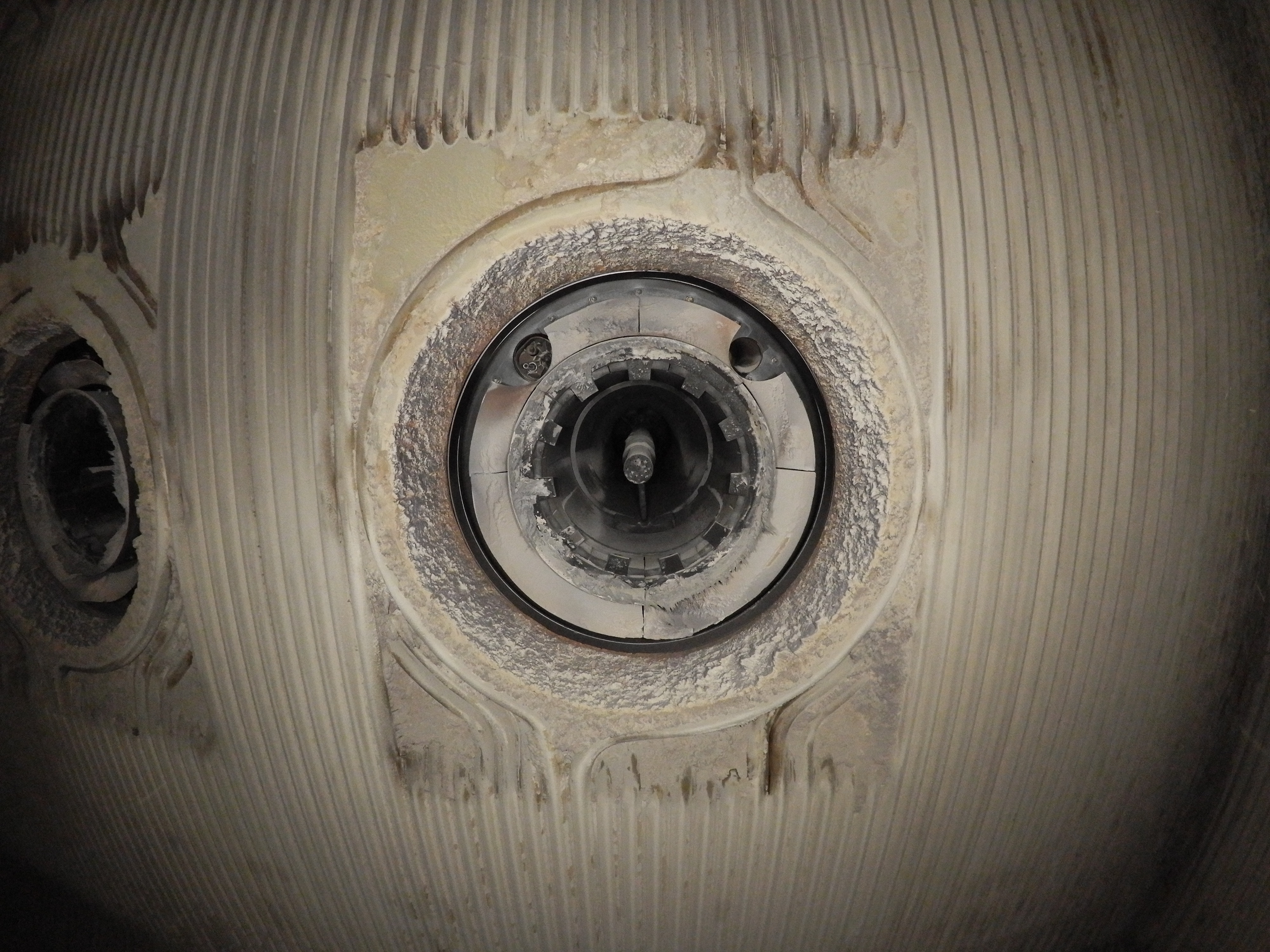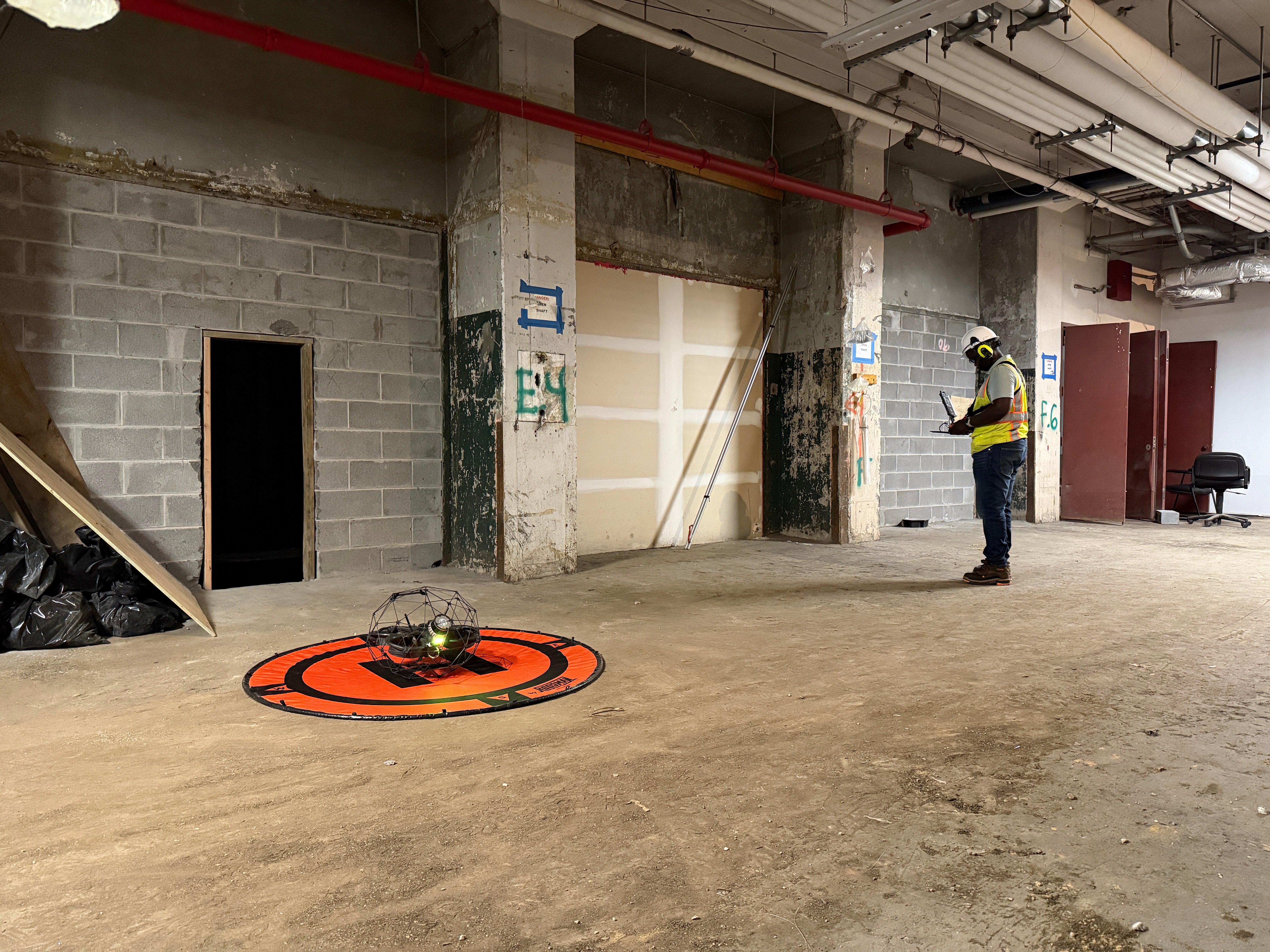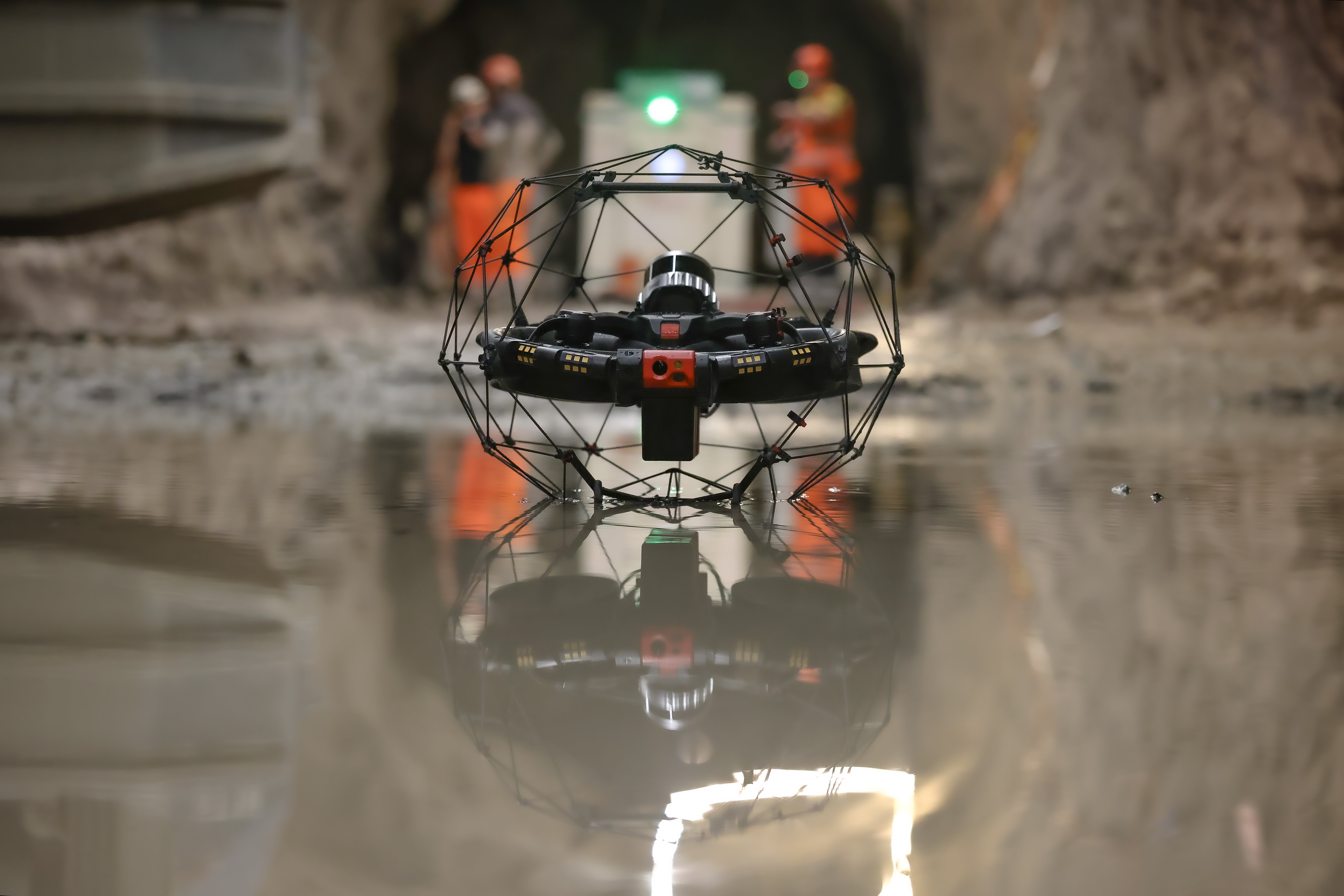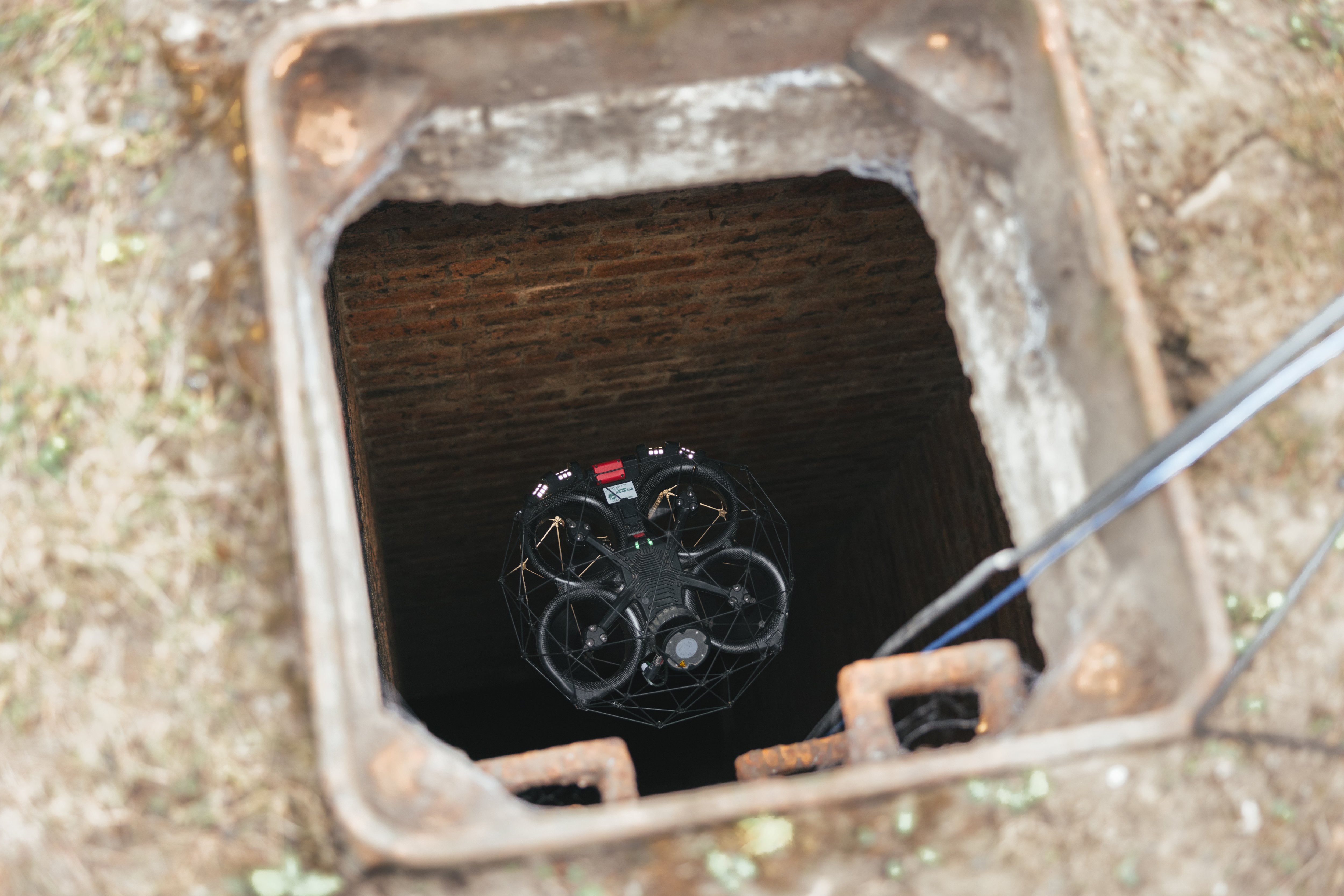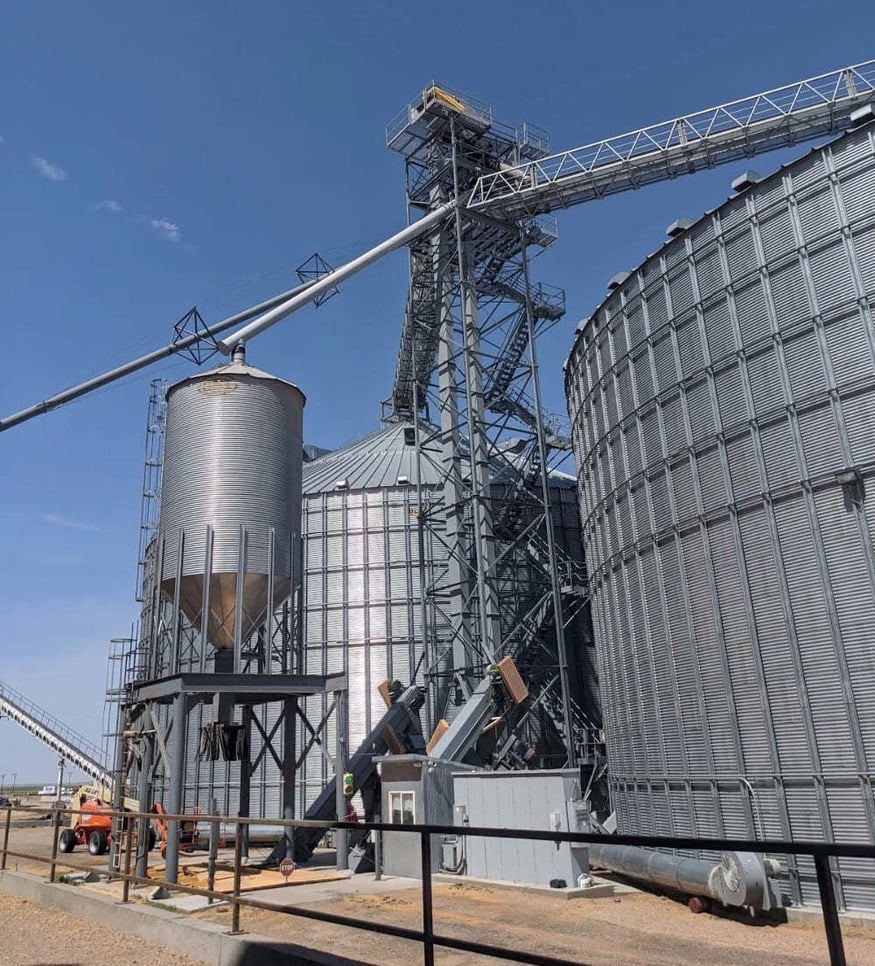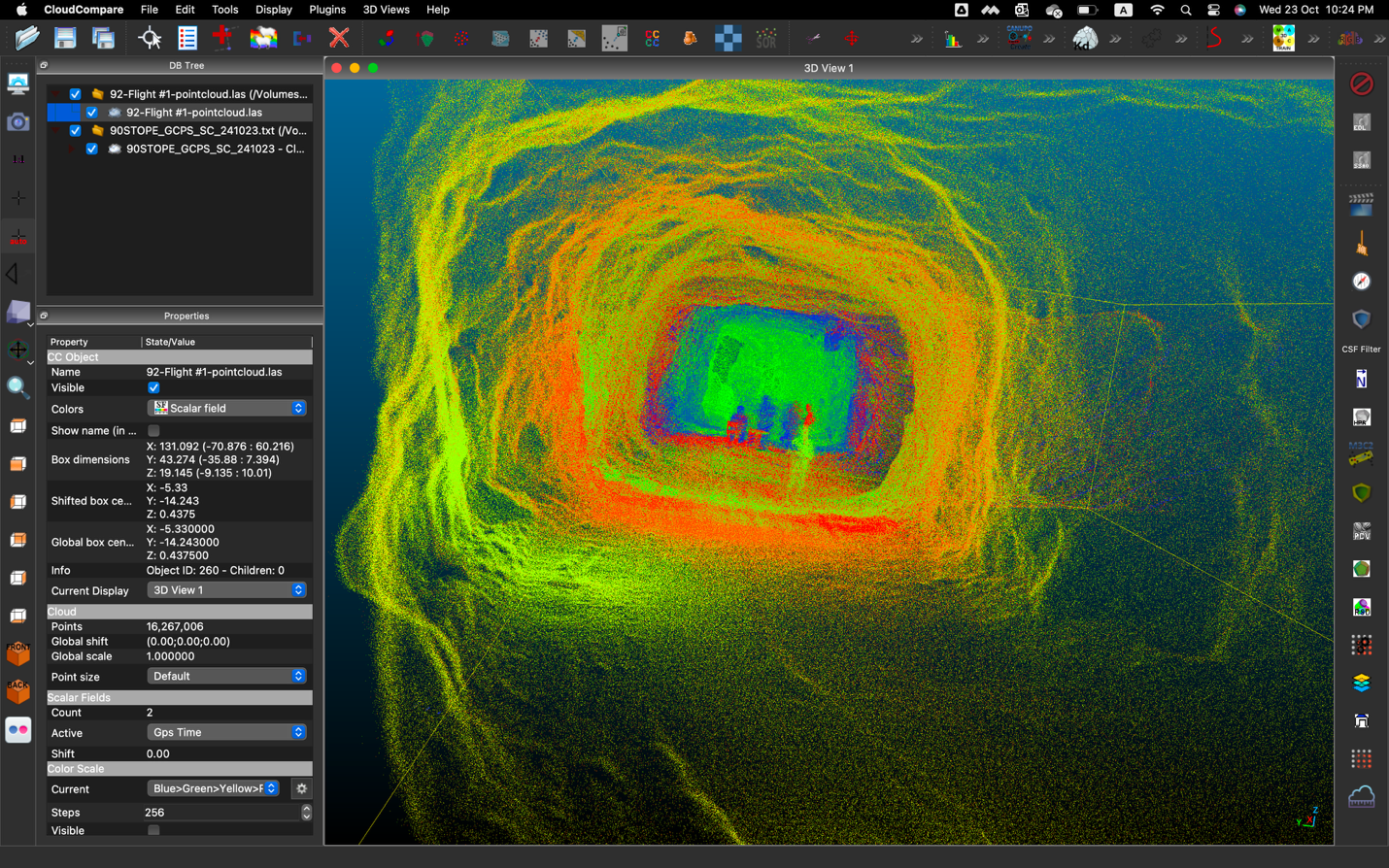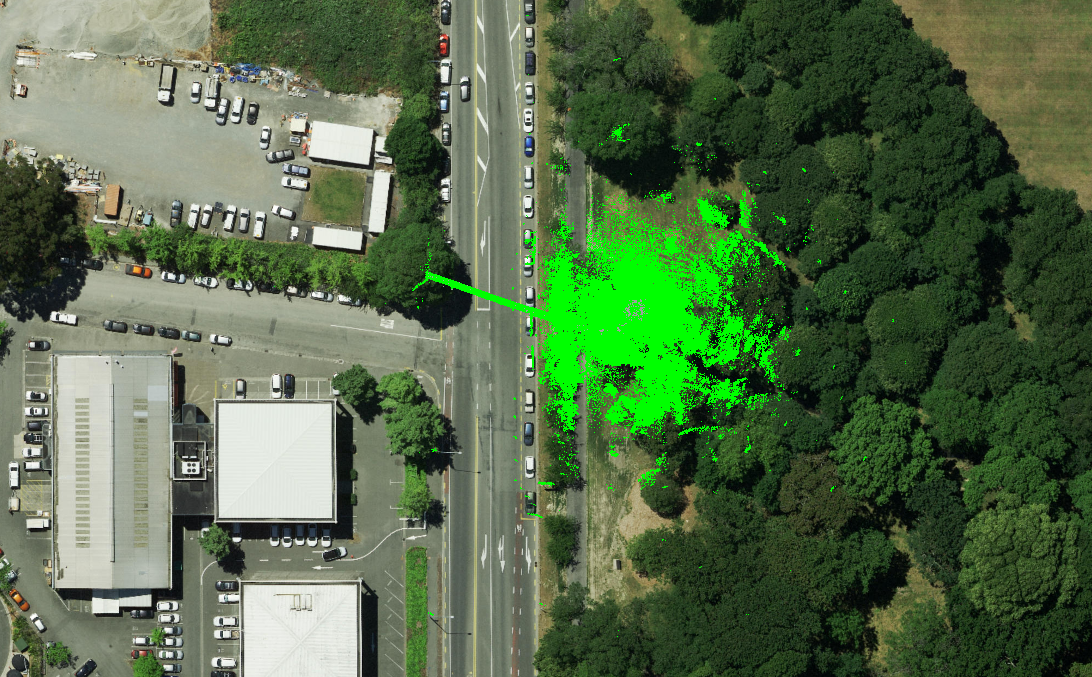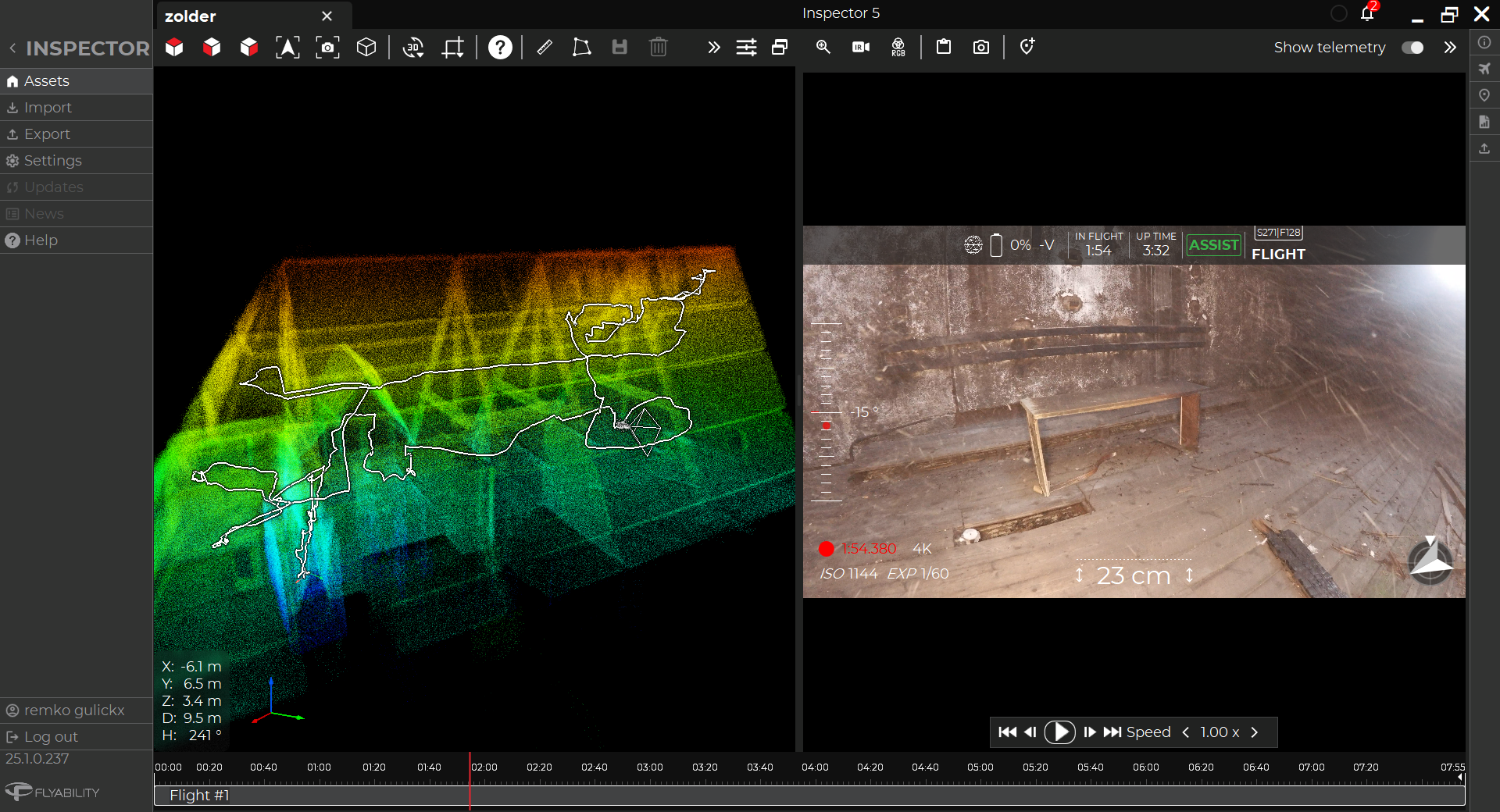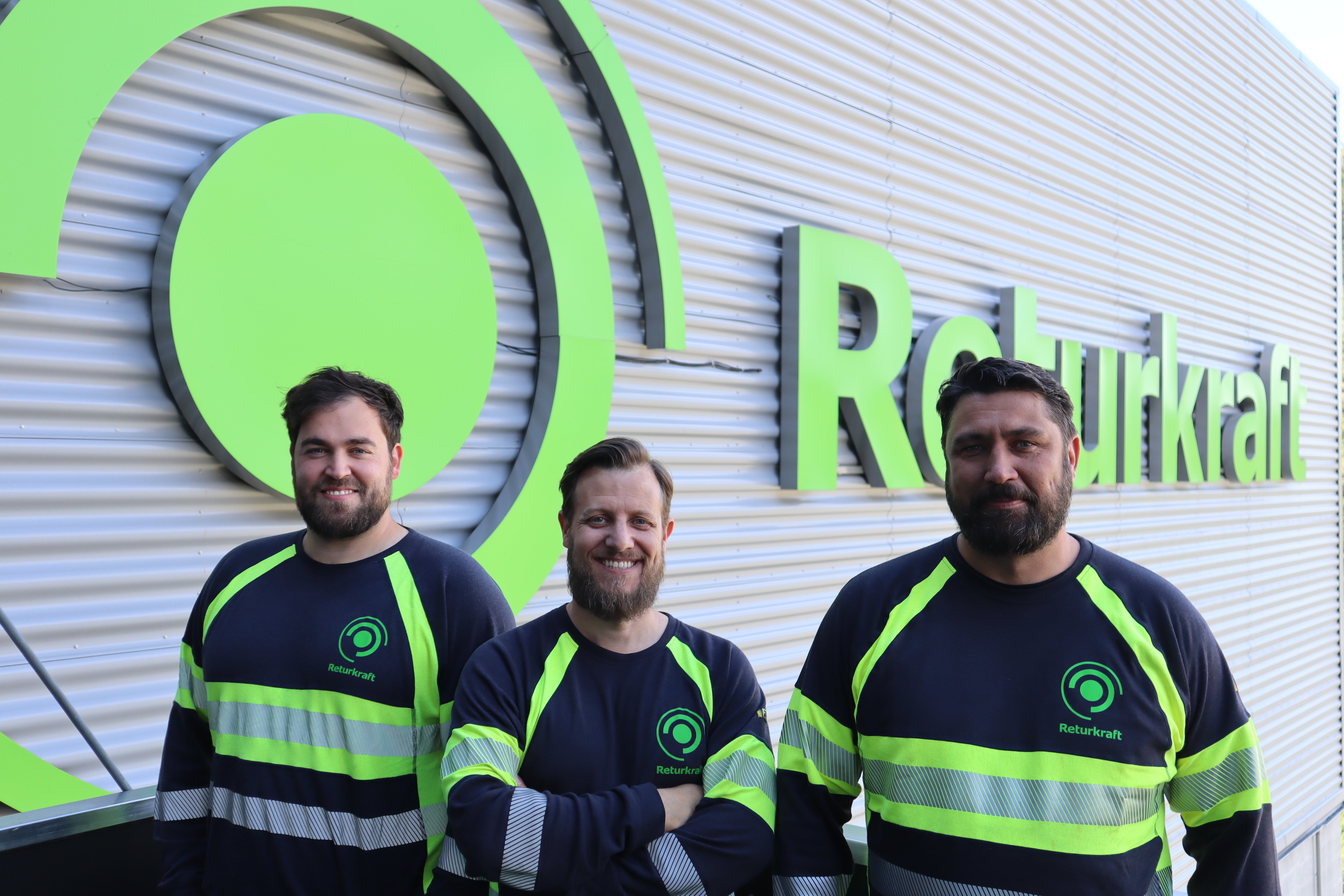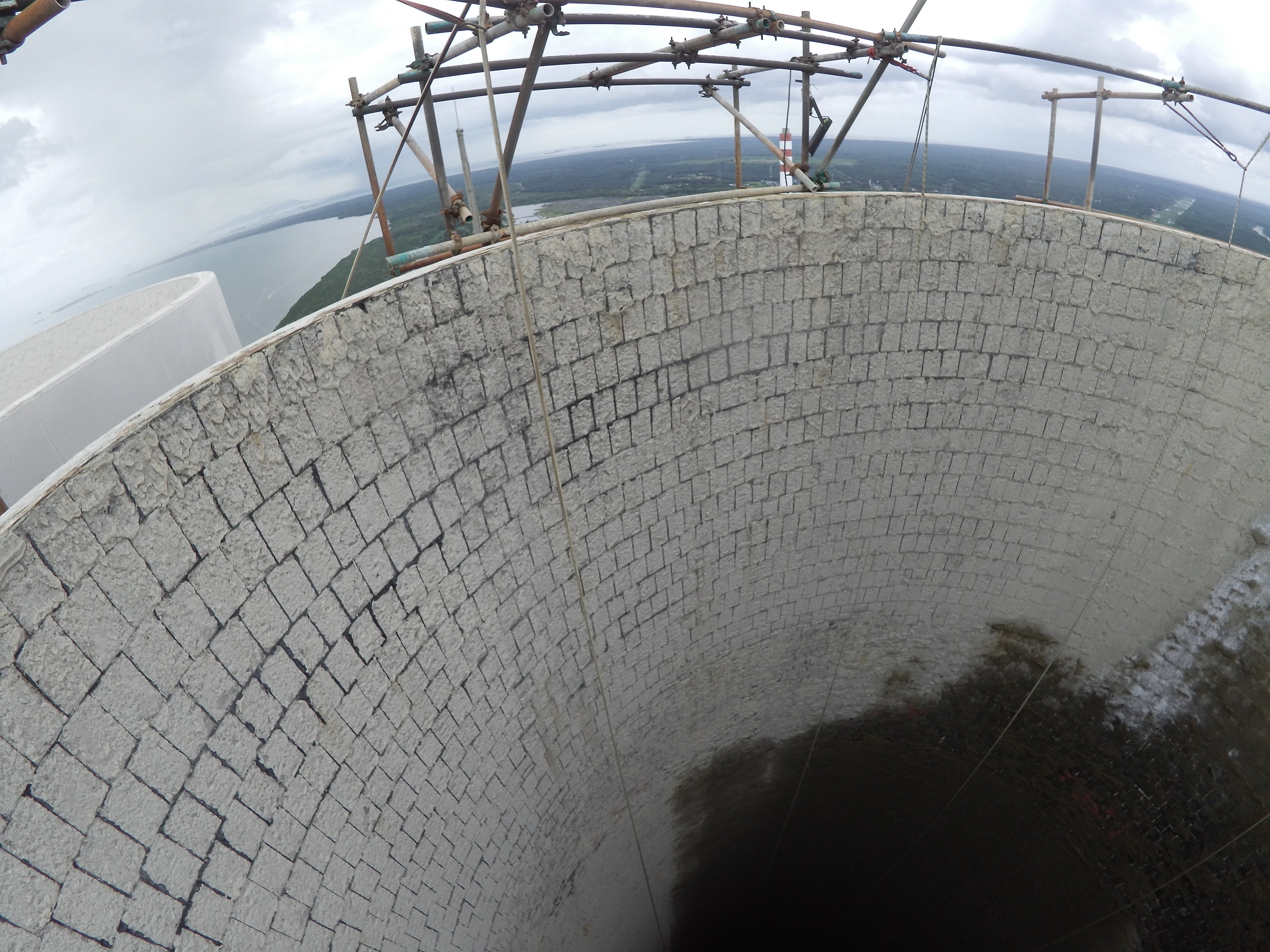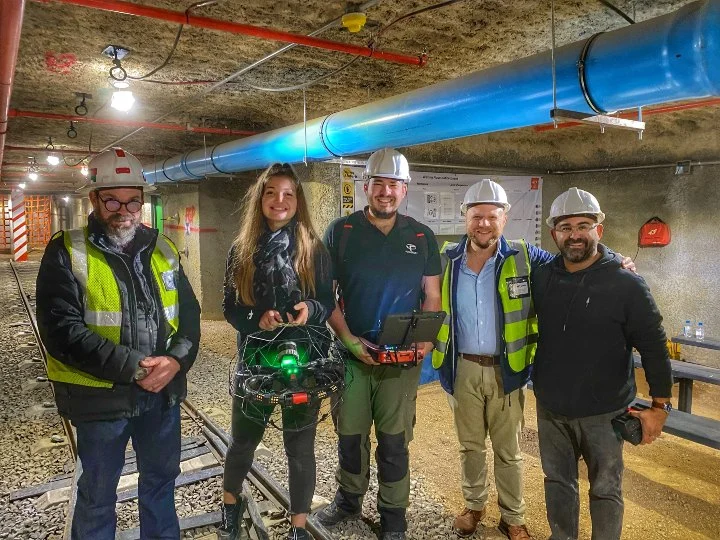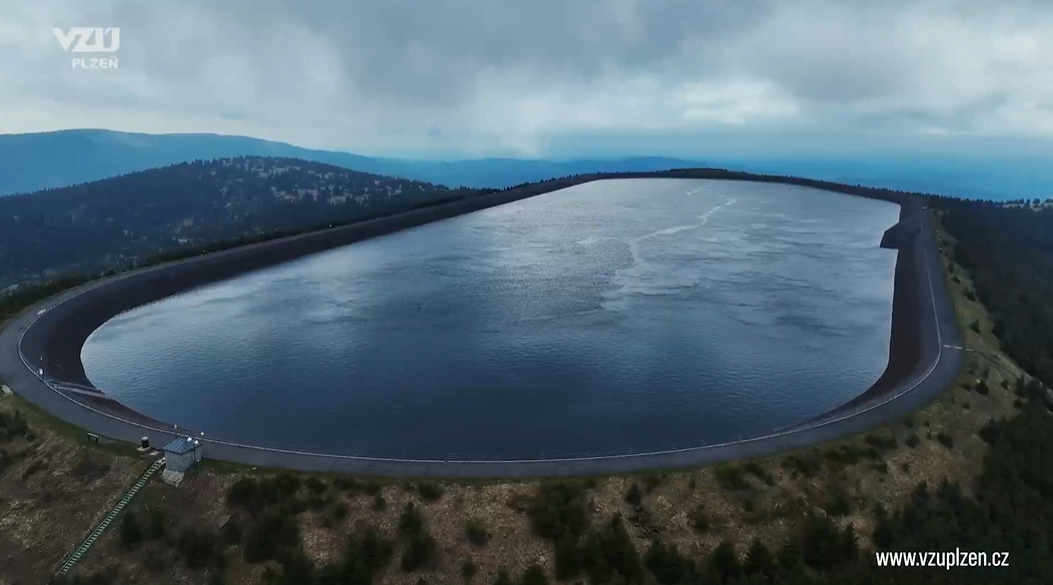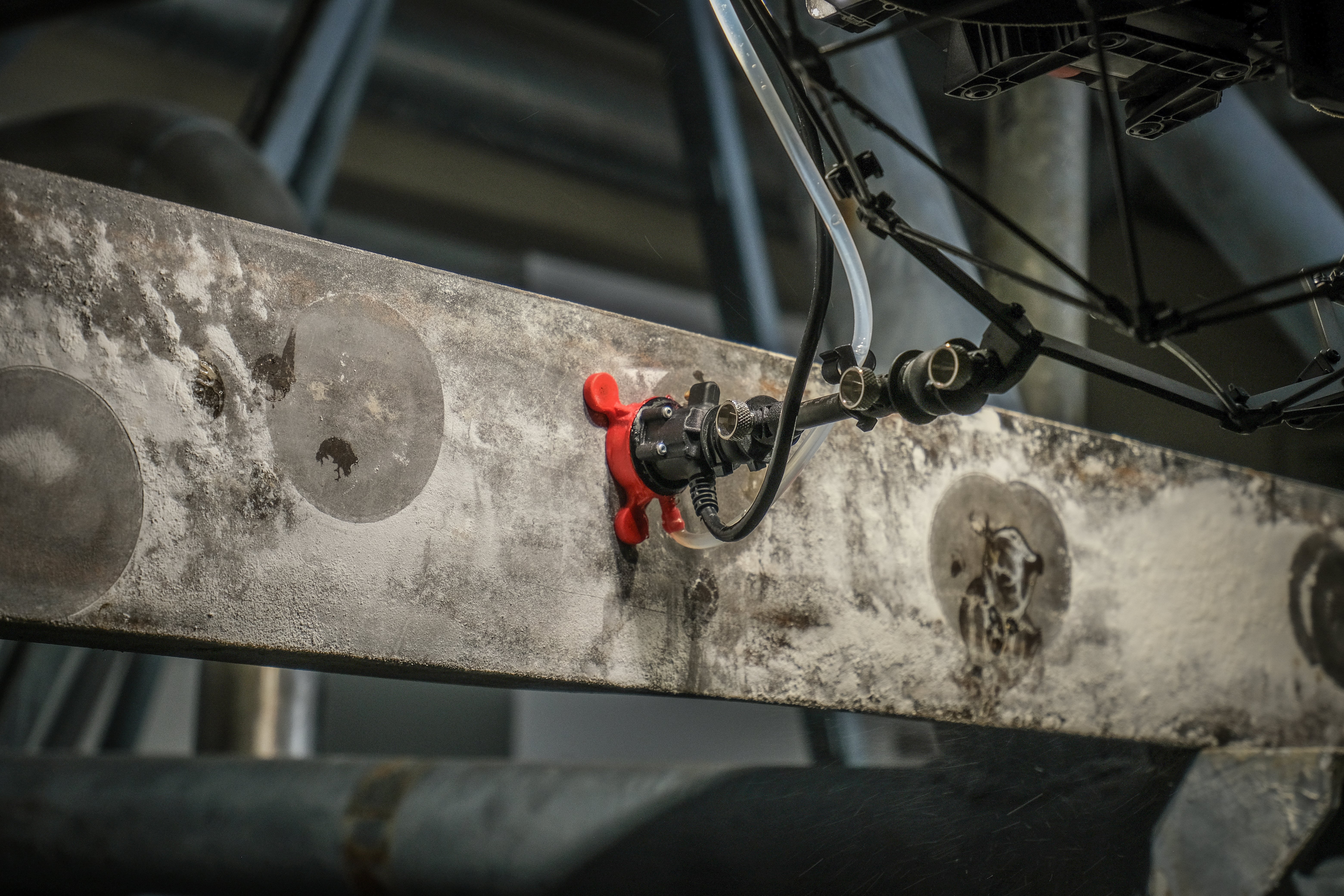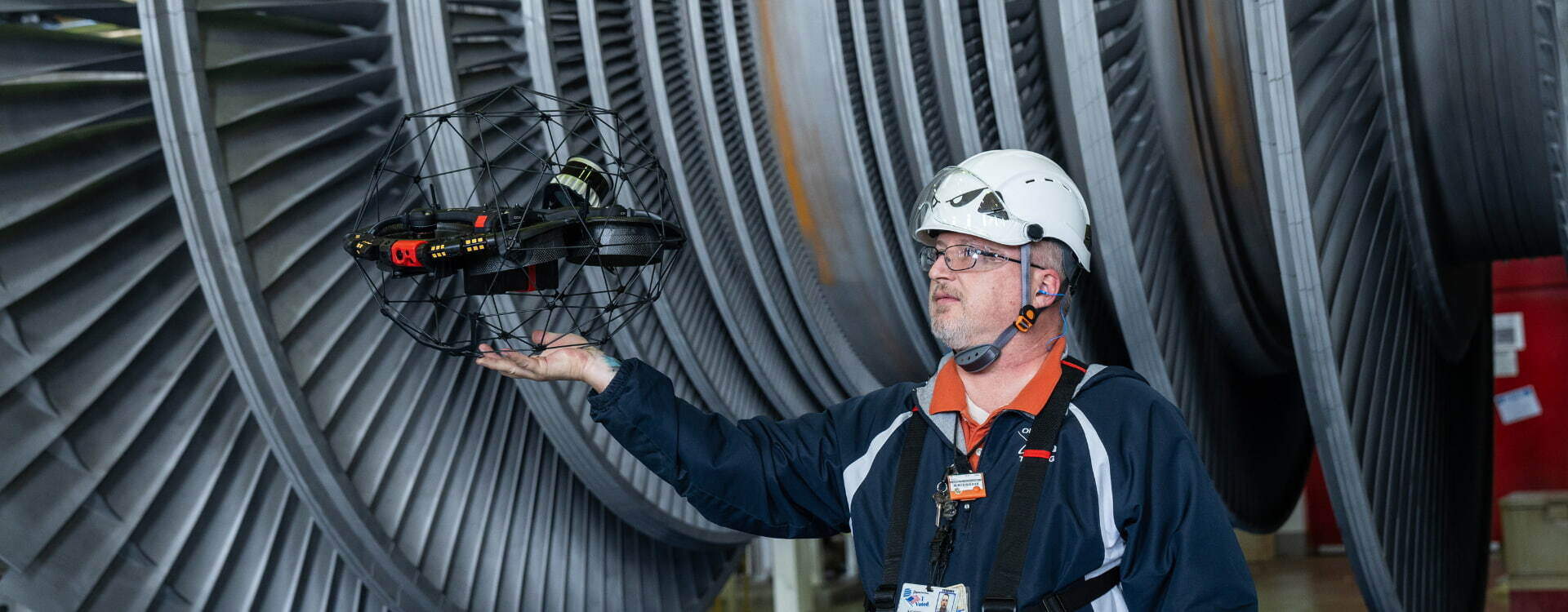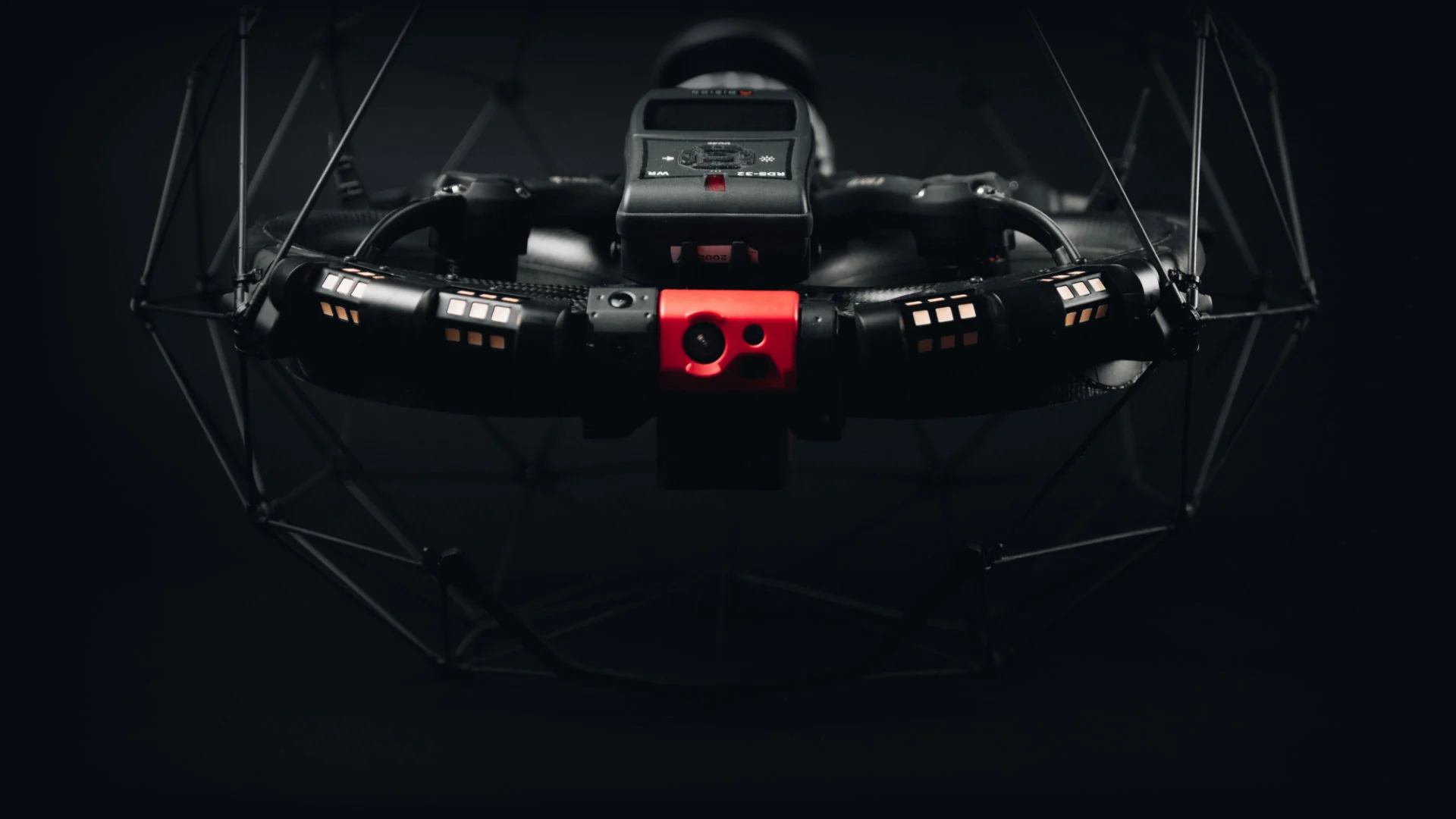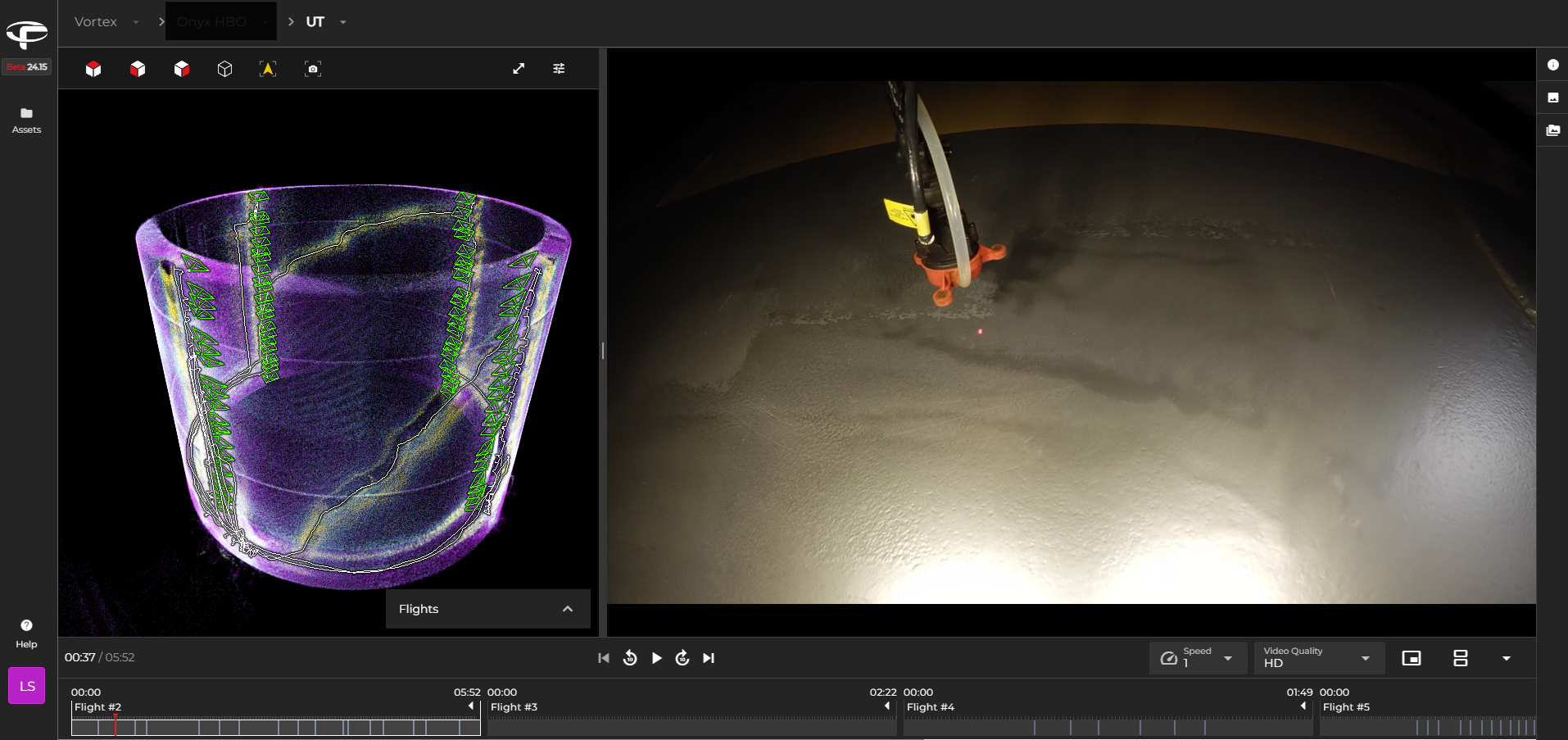- Case Studies >
- Cutting Condenser Inspections From 8 Days To 8 Hours
Cutting Condenser Inspections From 8 Days to 8 Hours With The Elios 3
Discover how using the Elios 3 to inspect condensers at Dominion Energy's nuclear power plant has enabled them to save $150,000 while also improving safety standards for inspectors.
Benefits In A Nutshell
|
Safety Using the Elios 3 keeps inspectors out of confined spaces as well as cutting work at heights of 20 meters (65 feet) inside the condenser. |
Access The drone provides quick, safe access to the asset. A comprehensive inspection can be completed without scaffolding or roping. |
|
Speed The Elios 3 drastically reduces inspection times with faster, safer data collection. Inspections can now be completed in two 12-hour shifts, rather than 7 days of 12-hour shifts. |
Records The Elios 3 provides a digital twin of the asset that can be used to plan maintenance work as well as keep a record of the asset's condition over time, allowing for accurate estimation of degradation rates. |
Both thermal and nuclear power plants rely on steam to create electricity. Once that steam is produced and has passed through the turbine, it remains incredibly hot and must be carefully managed to avoid wasting energy and water. This is when condensers come into play, converting the steam back into water which can be fed back into the system.
After the steam has spun the turbine, it is redirected to the condenser where the gaseous water is converted back to a liquid thanks to the condenser structure including a series of cooled pipes that water can condense onto. The liquid form can then be reused or discharged according to the plant’s needs and design.
How does a Traditional Condenser Inspection Work?
Condensers are typically inspected during every shutdown period, which varies between plants. For nuclear energy, this can be every 16 to 18 months when the plant refuels. Condensers must be carefully assessed to check for the rate of deterioration of wall linings, for cracks in the piping and shielding, and ensure there are no leaks or visible defects. This process can only take place when the reactor is offline. The condenser inspection is difficult due to the height and size of the asset as well as the complicated interior structure. It is also a confined space inspection, that is dark and wet, requiring specific protocols to ensure staff are safe when completing the inspection.
Per day shutdown, nuclear power plants with two reactors can lose over $3 million in revenue. Where usual operations typically call for a workforce of 700+ employees, shutdowns require an additional 1,000 people or more to help with specialized inspections, maintenance, and system updates. Many of these additional workers are scaffolders who have to create custom structures inside or around assets for inspections. Scaffolding for a condenser inspection can take 12 - 14 shifts of 12 hours to erect, and another 4 - 6 shifts to dismantle - or rather, 5-6 days to set up and 1-2 days to remove. The entire process takes over a week and racks up huge costs with scaffolding costing over $1,000 per hour and requiring at least 6 scaffolders to work on it during each shift.
As a result, the overall process of inspecting condensers is challenging, costly, and has inherent risks from work at height and in confined spaces. There is a safer, faster alternative: the Elios 3 drone.

The Elios 3 - the ultimate confined space inspection drone
How Dominion Energy is Deploying the Elios 3 Drone for Condenser Inspections
Dominion Energy is not just one of the biggest energy suppliers in North America - they’re a leader in the field of innovation. The Dominion Energy Unmanned Systems Group adopted drone technology for inspections as early as 2014, seeing the value in using UAVs to reach areas at height or simply get an additional perspective for inspections. While their work with drones began with outdoor surveys, they now have an impressive drone inspection program that uses the confined space drone Elios 3 alongside conventional outdoor quadcopters.
Surry Power Plant in Virginia is a nuclear plant located in Surry County. This nuclear site spreads across a huge 840-acre site near Smithfield. Operating with a 2-reactor system, the site has 2 main condensers. Their team uses the Elios 3 drone to inspect assets and infrastructure across the site, including the condensers. Thanks to using the Elios 3, the plant managed to save over $200,000 per shutdown on condenser inspections alone and free up 12 to 14 scaffolders for other jobs across the site.

The Elios 3 in use at Surry Power Plant, Virginia, under the careful piloting of Scott Paul, the Nuclear Unmanned Systems Coordinator.
Feature Spotlight: Why Use the Elios 3 for Condenser Inspections?
The Elios 3 drone is tailored for complex inspection environments. The drone simultaneously collects LiDAR, visual, and ultrasonic thickness data, giving asset managers a comprehensive understanding of the asset’s condition. This means the drone can be used for all of the necessary inspections for a condenser, from measuring the wall thickness to detailed visual inspections of the overall asset conditions. The benefits of using a drone for condenser inspections include:
- Safety → Eliminate unnecessary work in confined spaces or at height for scaffolders and engineers, keeping them safely on the ground.
- Efficiency → The speed of the inspection with the drone, taking hours instead of waiting days for scaffolding to be mounted/dismounted, improves the efficiency of the inspection. It also allows scaffolders to be deployed to different parts of the site during shutdown, optimizing the deployment of resources when under time pressure.
- Cost reduction → The Elios 3 cuts needs for scaffolding and speeds up the inspection, which reduces costs. In addition, the drone entering the confined space requires fewer safety protocols than human entry, which in turn reduces costs and improves the turnaround time of the inspection.
Inspecting Condensers with Drones at Surry Power Plant
Scott Paul is the Nuclear Coordinator at the Unmanned Systems Group at Dominion Energy. He and his team frequently use the Elios 3 to inspect assets across the site including the condensers.
 Scott Paul is an experienced Elios 3 pilot and has flown the drone in multiple nuclear assets, including condensers
Scott Paul is an experienced Elios 3 pilot and has flown the drone in multiple nuclear assets, including condensers
Using the Elios 3 to inspect the 20-meter high condensers (65 feet) has streamlined inspection workflows for the site and massively reduced the inspection time. It has cut the process from taking over a week to just 2 shifts. The Elios 3 pilot carefully scans the inside of the condenser for visual defects with the Elios 3’s 4K camera as well as takes UT measurements with the Elios 3’s ultrasonic thickness payload. They use this data to determine if the inside of the condenser is still ready for operation or if maintenance work is required. If maintenance work is required, scaffolding can be erected to reach a specific location rather than covering the whole asset, speeding up the overall maintenance work.
Using the drone has helped Paul keep inspectors safe as well as deploy resources more efficiently. In addition, the drone provides a video and 3D model that can easily be shared with mechanical and material engineers and also referred back to in future inspections. Paul and his team see both short-term and long-term benefits from using the drone as it helps get immediate results in addition to monitoring the condenser’s condition over time with easy comparisons between newer and older inspections. The Elios 3 completing condenser inspections at Surry Power Plant is just another standard mission for their team who adapt to different assets and missions at Surry and other Dominion Energy sites.
Benefits of Remote Condenser Inspections
It is clear from the time and cost savings, alongside the safety improvements, that the Elios 3 is an ideal tool for inspecting condensers. This application is not unique to nuclear power plants either, but can be rolled out to other steam power plants that include waste-to-energy, coal, and gas plants.
The drone provides clear accurate data that can easily be shared and reviewed over time, faster inspections, and improved working conditions for inspectors. As the team at Dominion Energy’s Unmanned Systems Group demonstrates the success of this technology, they highlight the value of drone inspections for condensers and complex assets in the nuclear sector - a method that is increasing in use and popularity across the industry.


.png)
